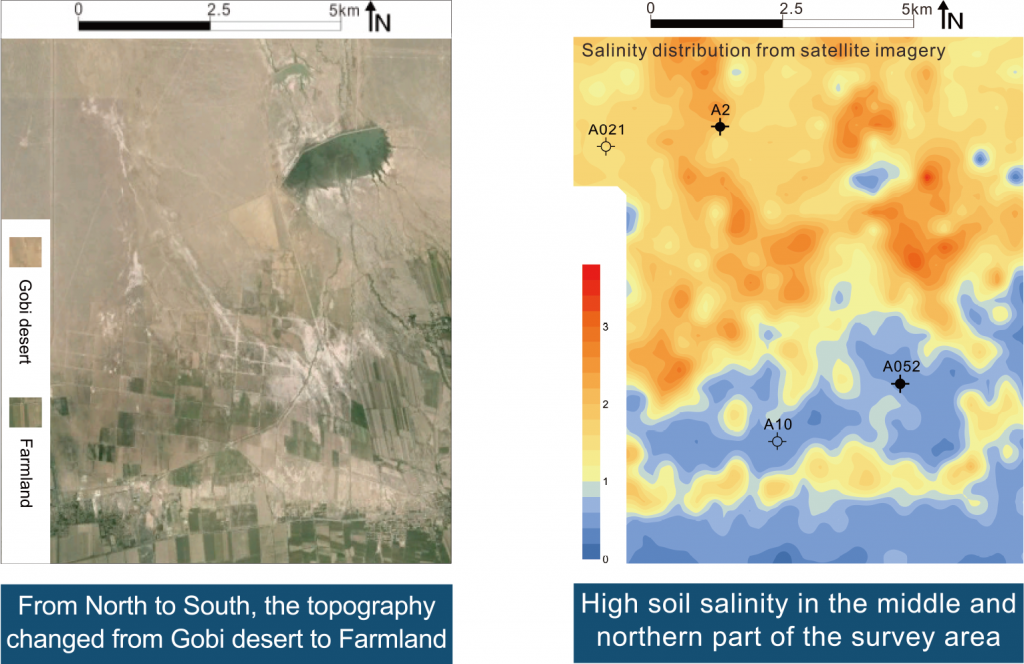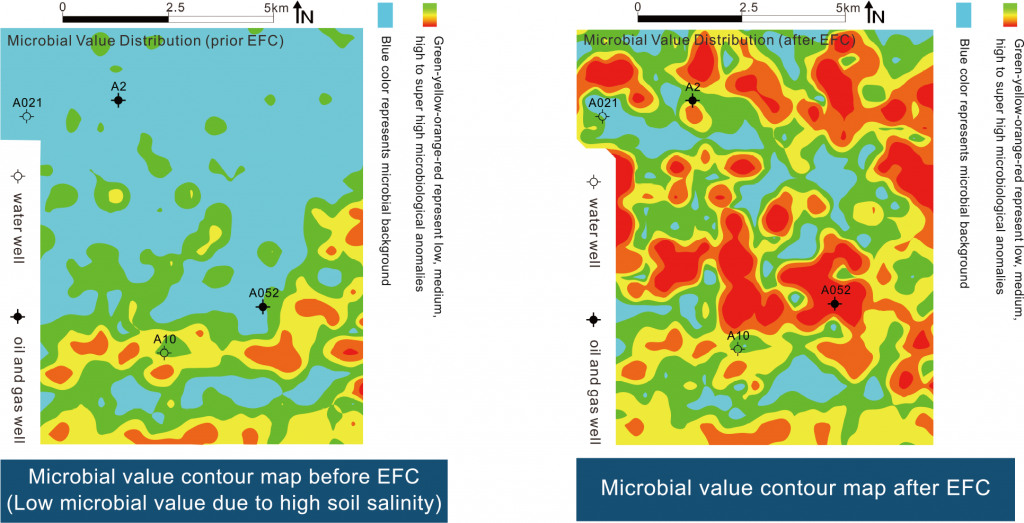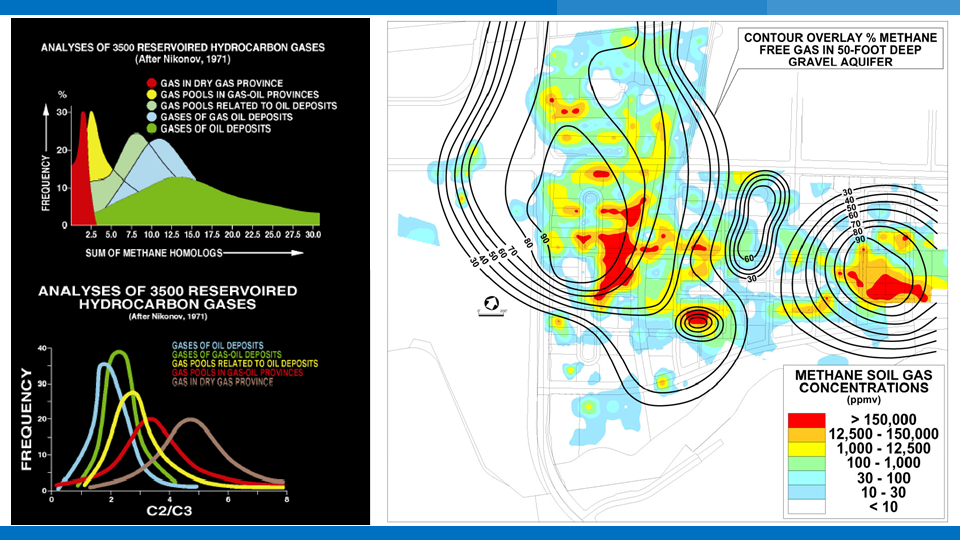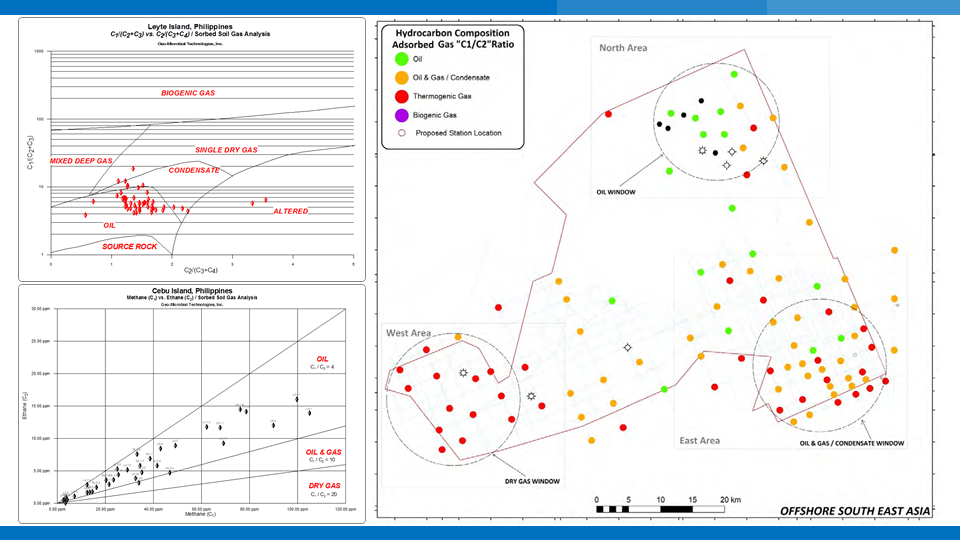GMHD is a new generation of hydrocarbon detection technology. It is widely applied to predict the occurrence and distribution of oil & gas accumulations at greater depth by detecting indicator microbes in surface soil or offshore sediment samples.
Technical Principle
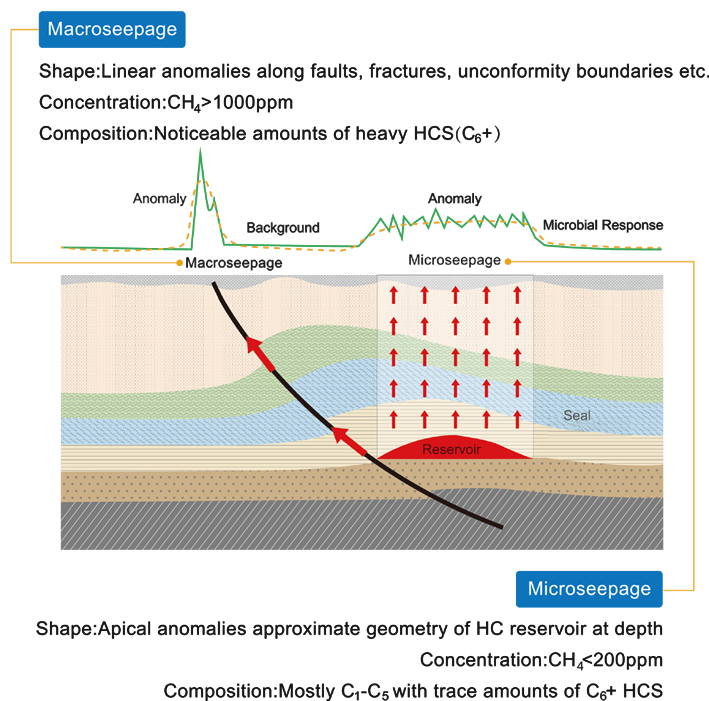
Eliminate Invalid Traps
GMHD is a highly reliable and cost-effective tool to high-grade leads and prospects, identify and eliminate invalid (no HC charged) traps, optimize the selection of the drilling location, improve drilling success rate and reduce exploration risk.
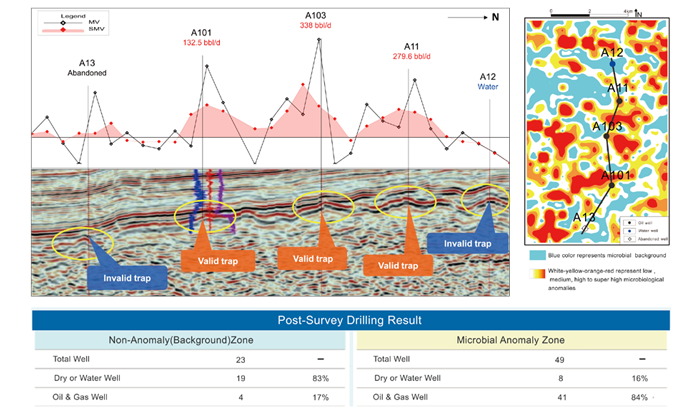
Mitigate CO2 Risk
Hydrocarbon and CO2 coexist in deep water structural traps. They both show anomalies in AVO detection, so it is difficult to distinguish them by AVO. GMHD has a unique way to differentiate HC and CO2 and provide a solution to mitigate the risk of CO2.

- Microbial value tends to decrease with increasing CO2 content
- With 2-3% of the drilling cost, GMHD could help the clients to mitigate CO2 risk and solve this difficult problem in oil and gas exploration.
Microbial Quick Screening (MQS)
AE&E has developed a Microbial Quick-screening Analysis (MQS) which allows on-site, quick evaluation (<48 hours) of reconnaissance or sparse samples to make ‘real-time’ in-field decisions for further survey optimization and infill, saving time and adding value. It is Essential for QA/QC and survey design optimization. It is a powerful tool to quickly identify areas of interest and guide further GMHD / seismic infill work plan to improve exploration efficiency and success rate.
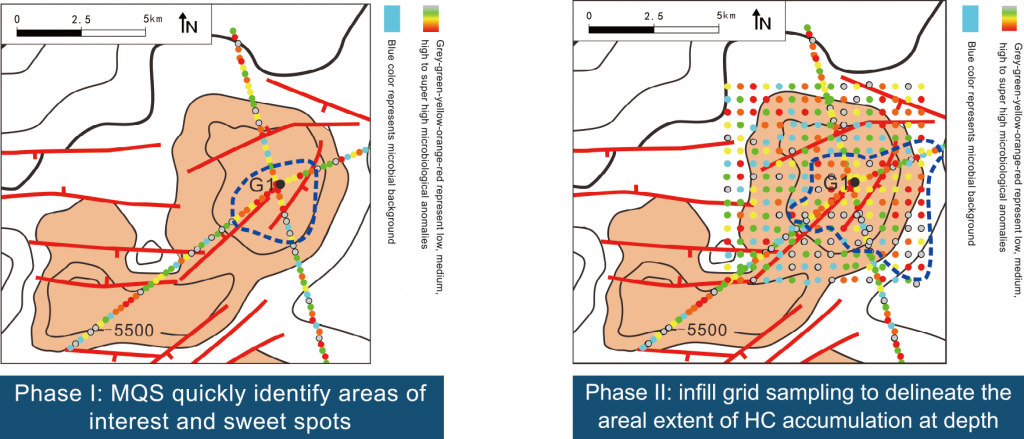
MQS can be extremely useful in frontier exploration blocks for quick onsite decisions: Where to focus? How to focus?
Environmental Factor Correction (EFC)
Like static corrections in seismic to overcome various surface interferences, Environmental factor correction is critical in GMHD to compensate for differences in soil properties (PH, Salinity, etc.), and differences in ecological and environmental conditions (bio-facies, seasonal change, etc). A common EFC is salinity correction, which compensates for slow growth of microbes and low microbial population in soils with high salinity.
Microbial measurement was totally overprinted by salinity effect (low salinity, high microbial values) before EFC. It is only after environmental correction that the microbial anomalies can truly reflect the hydrocarbon microseepage intensity.
